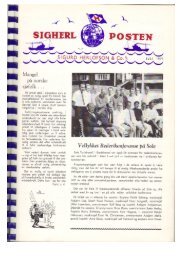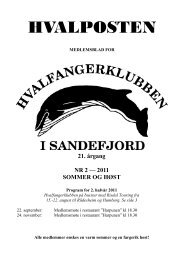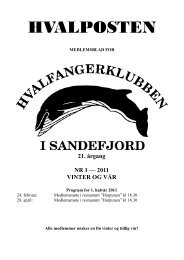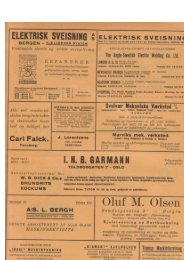Onassis OLYMPIC CHALLENGER souvenir catalogue - Lardex
Onassis OLYMPIC CHALLENGER souvenir catalogue - Lardex
Onassis OLYMPIC CHALLENGER souvenir catalogue - Lardex
You also want an ePaper? Increase the reach of your titles
YUMPU automatically turns print PDFs into web optimized ePapers that Google loves.
Arts and crafts<br />
As house flag, <strong>Onassis</strong> chose a pennant with a white cross on blue ground (the Greek<br />
colours), with the Greek letter Omega – the initial of his name – on a yellow rhombus in the<br />
cross intersection. On the funnel and house mark this pennant was framed above and beneath<br />
by two curved chains of five interlocked rings in the Olympic colours, programmatic of the<br />
vessel name and the challenge this name would pose to the established whaling nations:<br />
<strong>OLYMPIC</strong> <strong>CHALLENGER</strong>. The house mark of Olympic Whaling Company is featured on many<br />
of its give-aways and promotional gifts, but also on officers’ uniform parts and mess room<br />
tableware.<br />
Hunting the largest animal was a thing naturally fascinating a man like <strong>Onassis</strong>. He liked<br />
whaling, not just the business side, but also the very idea of it. He took friends whaling off<br />
Peru, and the furnishings of the bar on board his private yacht CHRISTINA were the gossip of<br />
the yellow press in his time, for the hand rails of the bar were pairs of sperm whale teeth, and<br />
the bar stools were covered with whale penis skin. The lighters he had made in the form of a<br />
harpoon cannon were men’s toys, reflecting his own fascination with the whale hunt (page 6).<br />
Hunting the largest animal also fascinates the common whalemen. Whalers with an artistic<br />
vein often express their fascination by creating folk art. As with almost all folk art objects,<br />
their works are unsigned. Once the artists, their shipmates, friends and relatives are dead, the<br />
artistic expressions of their creativity will pass into anonymity for good.<br />
In this exhibition, styles and hands can be discerned in the scrimshaw and related whaler folk<br />
art. But in most cases, we have to resort to “Notnamen” (substituted names), for the real<br />
names of their makers have already been lost in the oral transmission of the past half-century.<br />
It is hoped that this exhibition stimulates research among the surviving crewmembers of the<br />
<strong>Onassis</strong> whaling venture, so that at least some of the artwork can be salvaged from<br />
anonymity.<br />
Some <strong>Onassis</strong> scrimshander names are recorded, though:<br />
- Richard Ehlers, engine room man on board <strong>OLYMPIC</strong> ARROW (boat 9) made scrimshaw<br />
penguins.<br />
- Kurt Mahler (* 1925), 1 st flenser on the factoryship, created various kinds of sailor folk<br />
art incorporating whale bone and teeth. Though information is contradictory, he may<br />
possibly be the “<strong>Onassis</strong> flat-S scrimshander” (see next page).<br />
- Erich Reupke (1922-1999), radio operator on board <strong>OLYMPIC</strong> LEADER (boat 1) carved<br />
some small pieces in whale bone and tooth.<br />
- Walter Sievers (1912- ca. 2005), from <strong>OLYMPIC</strong> boats 1 and 6, made penguins and other<br />
Antarctic scrimshaw; in the 1980s he turned to creating more challenging objects – esp.<br />
harpoons and harpoon cannon models – from whale bone and teeth collected in the<br />
1950s (page 15).<br />
- Hans-Günter Worm (* 1918), whale worker on the factoryship, fashioned decorative<br />
objects from whale ivory appealing to the wavey taste of the 1950s (page 12).<br />
Some of these men may also have made scrimshaw work, for which we have to resort to<br />
substitute names.<br />
From the hand of the “<strong>Onassis</strong> flag painter” at least seven works are known, distinguishable<br />
by flags (Panama, Honduras, Olympic Whaling Co.) and Olympic Rings, which are painted<br />
on whale teeth and baleen slabs. Often, there are also commemorative inscriptions in German<br />
(page 10). One shipmate in possession of one of his works claimed that the “flag painter” was<br />
a steward on board <strong>OLYMPIC</strong> <strong>CHALLENGER</strong>.<br />
3







